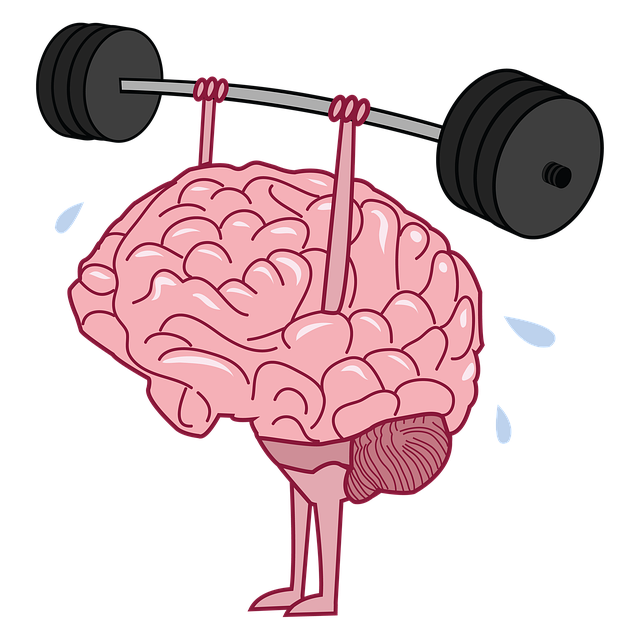Public awareness campaigns like Lafayette Hebrew Speaking Therapy's initiative play a vital role in educating communities about mental health, challenging stigmas, and promoting emotional well-being. With cultural competency at their core, these programs bridge the gap between vulnerable populations and healthcare services. By sensitively addressing mental health issues within specific communities and incorporating tailored resilience-building techniques, they enhance accessibility and engagement. Lafayette's innovative use of traditional outreach and digital tools in initiatives like Mental Wellness Journaling Exercise and Social Skills Training demonstrates significant impact on public awareness and mental health support within the Hebrew-speaking community.
Public awareness campaigns play a pivotal role in educating communities about mental health, breaking down stigmas, and promoting well-being. This article explores strategies for developing impactful initiatives, drawing insights from Lafayette Hebrew Speaking Therapy’s successful approach. We delve into understanding the target audience, designing compelling messages, and employing cultural sensitivity to engage diverse communities. Additionally, it examines measurement techniques to assess campaign effectiveness, ensuring continuous improvement in public mental health outreach.
- Understanding Public Awareness: The Role of Communication in Mental Health
- Designing Effective Campaigns: Strategies for Success with Lafayette Hebrew Speaking Therapy
- Engaging Target Audiences: Cultural Sensitivity and Community Outreach
- Measuring Impact and Iteration: Evaluating the Effectiveness of Public Awareness Campaigns
Understanding Public Awareness: The Role of Communication in Mental Health

Public awareness campaigns play a pivotal role in educating communities about mental health, breaking down stigmas, and fostering an environment conducive to emotional well-being. Effective communication is essential for achieving these goals, especially in diverse societies like Lafayette, where cultural competency is key. The Lafayette Hebrew Speaking Therapy initiative serves as a prime example of how targeted awareness programs can make a significant impact. By addressing mental health issues within specific communities, they bridge the gap between vulnerable populations and healthcare services.
These campaigns must be designed with sensitivity to cultural nuances, ensuring that messages resonate with diverse audiences. Incorporating resilience-building techniques tailored to different backgrounds is crucial. For instance, integrating traditional healing practices alongside modern therapy methods can enhance accessibility and engagement. Through such inclusive approaches, healthcare provider cultural competency training becomes an integral part of promoting emotional well-being on a larger scale, ultimately leading to more effective interventions and improved mental health outcomes.
Designing Effective Campaigns: Strategies for Success with Lafayette Hebrew Speaking Therapy

Designing effective public awareness campaigns requires a thoughtful and strategic approach, especially when targeting specific communities like those speaking Hebrew. Lafayette Hebrew Speaking Therapy has successfully navigated this challenge by incorporating tailored messaging and engaging formats. Their campaign focuses on promoting mental wellness and providing guidance for common issues such as anxiety relief. By combining traditional outreach with innovative digital tools, they’ve enhanced accessibility to their services.
For instance, they utilize the Mental Wellness Journaling Exercise as a way to encourage self-reflection and offer Social Skills Training through interactive online platforms. This multifaceted approach ensures that the campaign resonates with diverse audiences within the Hebrew-speaking community. Through such initiatives, Lafayette Hebrew Speaking Therapy exemplifies how cultural sensitivity and modern techniques can significantly impact public awareness and improve mental health support for all.
Engaging Target Audiences: Cultural Sensitivity and Community Outreach

In designing public awareness campaigns, especially those focused on mental health initiatives like Lafayette Hebrew Speaking Therapy, understanding cultural sensitivity and leveraging community outreach are paramount. Different communities have diverse needs and perspectives shaped by their unique cultural backgrounds. A successful campaign must acknowledge and respect these differences to foster genuine engagement. This involves tailoring messages to resonate with specific cultural norms, values, and concerns while ensuring inclusivity and accessibility.
Community outreach acts as a bridge between the campaign and the target audience. It involves proactive interactions within communities, allowing for deeper understanding of local challenges and preferences. By partnering with community leaders, organizations, and influencers trusted by the target demographic, campaigns can gain visibility, credibility, and buy-in. This approach, when combined with effective communication strategies promoting positive thinking, self-care practices, and resilience building, has been proven to enhance campaign impact and encourage broader participation.
Measuring Impact and Iteration: Evaluating the Effectiveness of Public Awareness Campaigns

Measuring the impact of public awareness campaigns is a crucial step in understanding their effectiveness and identifying areas for improvement. At Lafayette Hebrew Speaking Therapy, we believe that evaluating success goes beyond simple reach; it involves quantifying behavioral changes and attitudinal shifts among the target audience. This process requires robust data collection methods, such as pre- and post-campaign surveys, focus groups, and social media analytics. By comparing responses, we can pinpoint the campaign’s strengths and weaknesses.
For instance, a successful public awareness campaign on crisis intervention guidance might lead to increased calls to helplines or a rise in online discussions about mental health. These quantitative indicators show immediate impact. Qualitatively, positive thinking and communication strategies promoted through campaigns could be assessed by tracking changes in social media conversations, where users share experiences and praise the initiative. Iteration is key; ongoing evaluation allows for real-time adjustments, ensuring future campaigns are even more impactful and aligned with the community’s needs.
Public awareness campaigns, as demonstrated by the successful initiatives of Lafayette Hebrew Speaking Therapy, play a pivotal role in addressing mental health issues within diverse communities. By employing strategic communication and cultural sensitivity, these campaigns can effectively engage hard-to-reach audiences. Through measurable impact assessments, organizations like Lafayette Hebrew Speaking Therapy can continually refine their approaches, ensuring that public awareness efforts remain relevant and impactful. This iterative process is essential to creating lasting positive changes in mental health discourse and accessibility.














